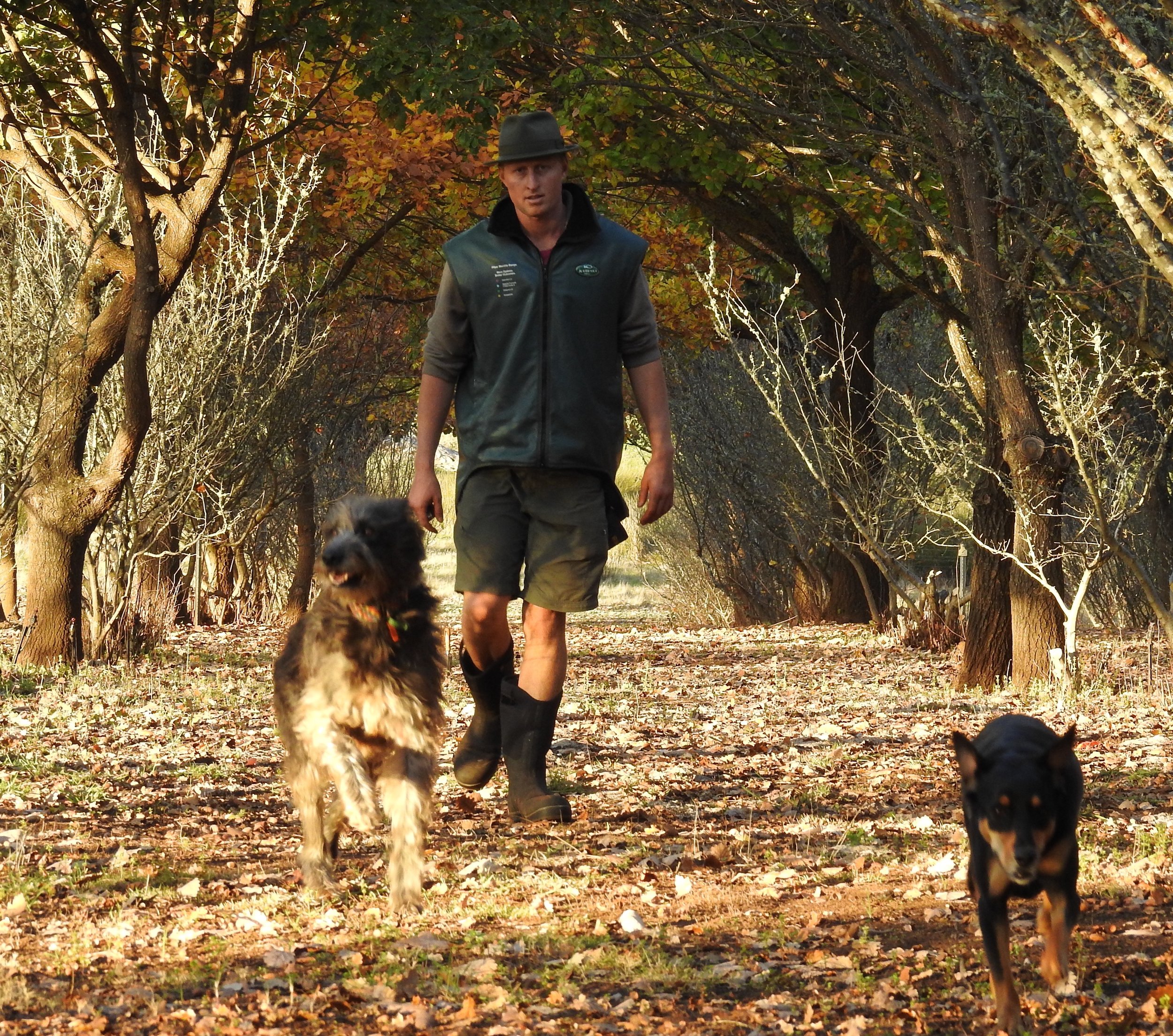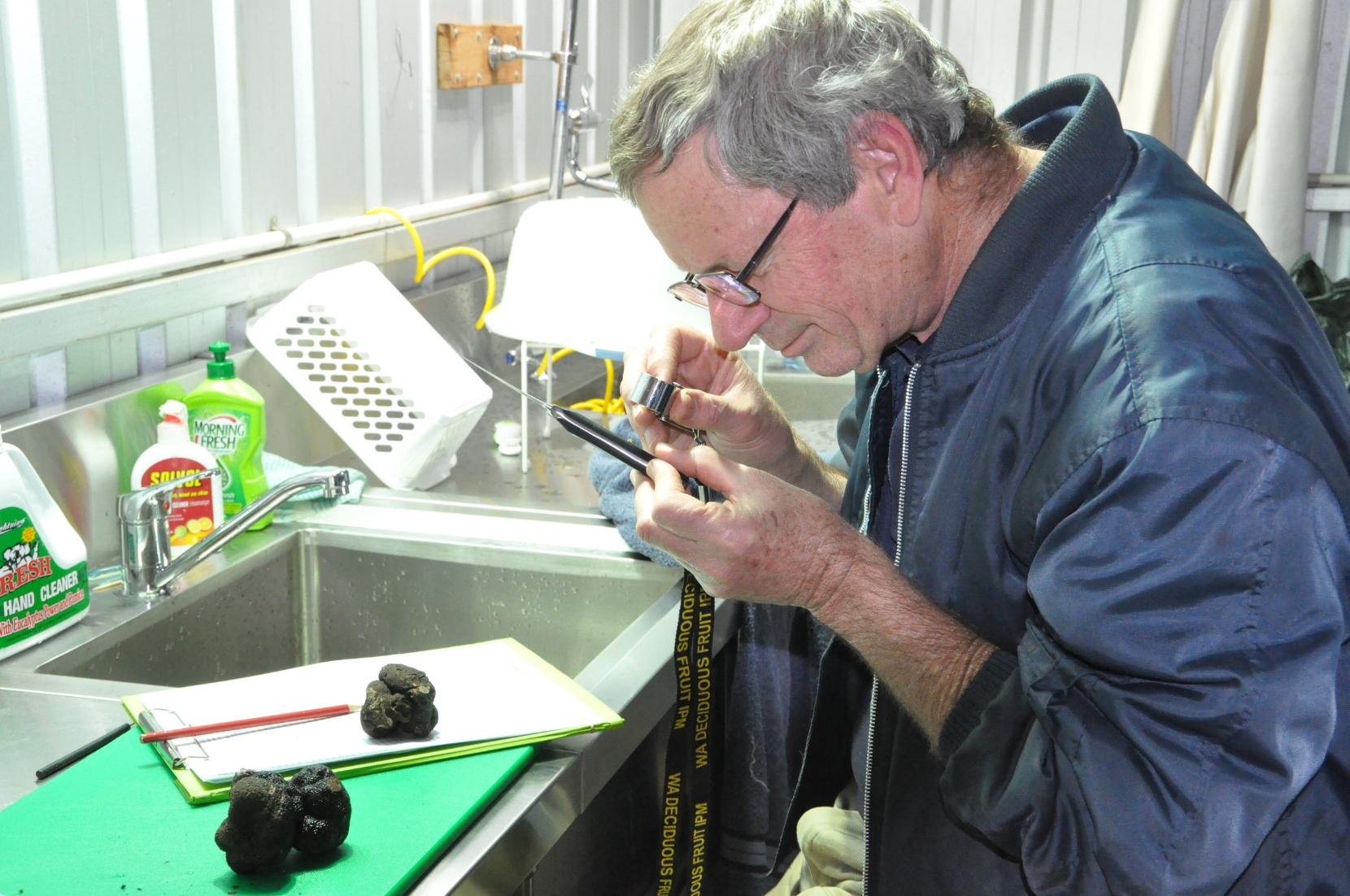Truffle dogs are an integral part of the truffle enterprise. Some people choose to have their truffles hunted by a professional team while others have their own dogs. All these dogs require hours of scent training to ensure they sniff out the most delectable truffles and to ensure they have the endurance to walk the rows and rows of orchards.
In this story we are featuring Mel Booth, one of the earliest professional truffle hunters in the district, and her new dog Ruby.
As I walk down a row of hazel and oak trees, watching my dog’s rump, I’m still in awe of their ability to air scent to a ripe truffle buried deep within the earth and covered with a thick layer of leaves. I’ve been working scent dogs for nearly 20 years, and I have always wondered how these amazing human companions see the world through their sense of smell.
Over the time that I have worked with scent detection dogs and the public, there are always the same comments made about dogs… “my dog would make a great truffle dog because his nose is always on the ground sniffing” or “my dog loves to dig, they would be awesome at hunting truffles”. These traits come naturally to all dogs; it is what they do! Now, to harness and control those natural behaviours so they perform the task that the handler wants is the challenge.
Ruby is the next truffle pooch for me to train. She is a young and exuberant pup whose energy I need to harness. When I start with a new dog, I often doubt whether I can shape them to the task at hand. With training comes failures, but it is these failings that drive me to succeed. I enjoy the challenge, often needing to rejig the plan to achieve the desired outcome.
I follow my training plan with Ruby down to the minute detail. I reward when is needed and correct if I have to. I repeat these tasks over and over again to cement the scent in Ruby’s brain. Ruby is only 4 months old, but the path we are following means she should be able to supplement my existing dogs in the 2024 season.
Now that we are out of the season and access to fresh truffle is nonexistent, so I must re-train her on a new odour, I use frozen truffle, so that I can continue her development. Soon I will be making the tasks harder and more complex, so Ruby understands that truffles don’t always come in a convenient container with holes in the lid. Ruby laps up the one-on-one time when we train, and the treat rewards are a big bonus on top of spending time with me.
Despite my previous comments about doubt, I’m feeling pretty positive about young Ruby-Roo. She is a very confident and robust Labrador. She is brave when she needs to be but does not take risks. She is not fazed by misadventure and gets straight back on the bike if she falls off. It is rewarding to watch her figure out a puzzle when we train together and to see the ‘ah ha’ moments when she understands what is being asked of her. All these things start to erase the doubts as I see Ruby developing into a confident, smart dog. And as a bonus, Ruby is a very nice dog to have around the house and she has fitted in well with the other dogs…well, they tolerate her.
Watch the truffle paddocks to see how Ruby fits into my Truffle Dogs WA team and how much she enjoys the work of truffle hunting.
Mel Booth
Truffledogs WA











